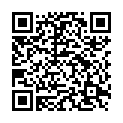|
|
|
| Module code: WIBASc345 |
|
|
2V+1U+1PA (4 hours per week) |
|
5 |
| Semester: 3 |
| Mandatory course: yes |
Language of instruction:
German |
Assessment:
Written exam on Design Technology (70%) + CAD project (30%)
[updated 13.09.2018]
|
WIBASc345 (P450-0061, P450-0062) Industrial Engineering, Bachelor, ASPO 01.10.2013
, semester 3, mandatory course
|
60 class hours (= 45 clock hours) over a 15-week period.
The total student study time is 150 hours (equivalent to 5 ECTS credits).
There are therefore 105 hours available for class preparation and follow-up work and exam preparation.
|
Recommended prerequisites (modules):
WIBASc145 Physics
WIBASc155 Materials Engineering
WIBASc165 Mathematics I
WIBASc235 Engineering Mechanics I
WIBASc245 Manufacturing Engineering
WIBASc265 Mathematics II
[updated 01.02.2020]
|
Recommended as prerequisite for:
WIBASc-515 Automation Engineering
WIBASc-525-625-FÜ32 Technology and Innovation Management
WIBASc-525-625-FÜ36 Technology and Innovation Management (English)
WIBASc-525-625-FÜ42 Design Thinking & Business Model Innovation
WIBASc-525-625-Ing13 CAD in CATIA - The Basics
WIBASc-525-625-Ing14 Machine tools
WIBASc-525-625-Ing8 Elements of Technical Products
[updated 09.03.2021]
|
Module coordinator:
Prof. Dr. Dirk Hübner |
Lecturer:
Prof. Dr. Dirk Hübner
[updated 01.02.2020]
|
Learning outcomes:
After successfully completing this module students will:
_ be familiar with design methodology and technology
_ be able to read technical drawings
_ be proficient in drawing and dimensioning simple technical components with CAD
_ be able to name the properties and areas of application of important machine elements
_ be proficient in the calculation of selected machine elements
[updated 13.09.2018]
|
Module content:
1. Introduction, design principles and methodology
2. Standards, tolerances and fits, surfaces
3. Reading technical drawings
4. Introduction to CAD
5. Strength calculations on shafts and axles
6. Overview of properties, areas of application and calculation bases of selected
machine elements Shaft-hub connections, screws, springs
[updated 13.09.2018]
|
Teaching methods/Media:
Design Technology:
Lecture notes will be available as a set of slides.
[updated 13.09.2018]
|
Recommended or required reading:
Design Technology:
_ Muhs, D./ Wittel, H./ Becker, M./ Jannasch, D./ Voßčiek, J./ Roloff/ Matek: Maschinenelemente, 20. Auflage, Vieweg+Teubner Verlag, 2011
_ Decker, K.-H-; Kabus, K.: Maschinenelemente, 18. Auflage, Hanser Fachbuchverlag, 2011
_ Hesser, W.; Hoischen, H.: Technisches Zeichnen: Grundlagen, Normen, Beispiele, Darstellende Geometrie, Cornelsen Verlag, 2011
_ Grote, K.-H-; Feldhusen, J.: Dubbel: Taschenbuch für den Maschinenbau, Springer Berlin Heidelberg, 2011
[updated 13.09.2018]
|

